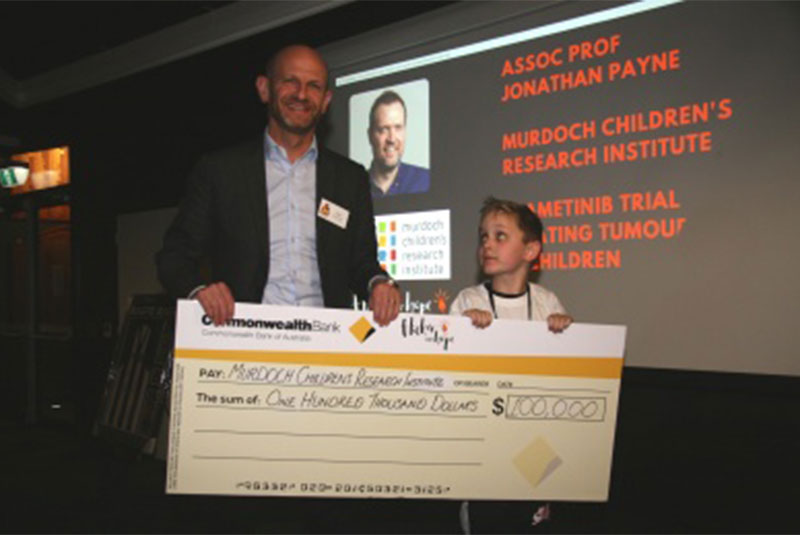Funding for research into treating a genetic disorder

Neurofibromatosis type 1 (NF1) is a genetic condition associated with the development of tumours in the nervous system, such as the brain, spinal cord, or nerves that send signals throughout the body. There is currently no cure for NF1.
 As well as tumours, 80 per cent of children with NF1 will have moderate to severe cognitive difficulties. Over 50 per cent of children with NF1 have learning difficulties such as dyslexia, about 40% have ADHD, and 25 to 30 per cent have autism spectrum disorder.
As well as tumours, 80 per cent of children with NF1 will have moderate to severe cognitive difficulties. Over 50 per cent of children with NF1 have learning difficulties such as dyslexia, about 40% have ADHD, and 25 to 30 per cent have autism spectrum disorder.
Established in 2018, the Flicker of Hope Foundation aims to raise awareness of this little-known genetic disorder which affects about one in 2500 people worldwide, with about 10,000 Australians currently living with the condition. To date, the Foundation has raised an incredible $1.5m to support NF1 research.
Thanks to Flicker of Hope’s generosity, three research projects have been funded at MCRI, two led by Associate Professor Jonathan Payne, and one led by Dr Gabriel Dabscheck. The TiNT Trial is looking into trametinib, a targeted anti-cancer drug that has shown promising early results in treating some NF1 tumours; the second research project aims to understand how NF1 affects brain development and behaviour using stem cell models. Dr Dabscheck’s MaGen study aims to develop a screening test for aggressive soft tissue tumours in patients with NF1, to lead to earlier diagnoses and better outcomes.
Together with its generous supporters and sponsors, the Foundation is giving children and families with NF1 hope for the future.
Image: Dr Gabriel Dabscheck (Royal Children’s Hospital) accepting a cheque on behalf of MCRI from Billy at the 2022 Kicking Butt for NF Research event.



